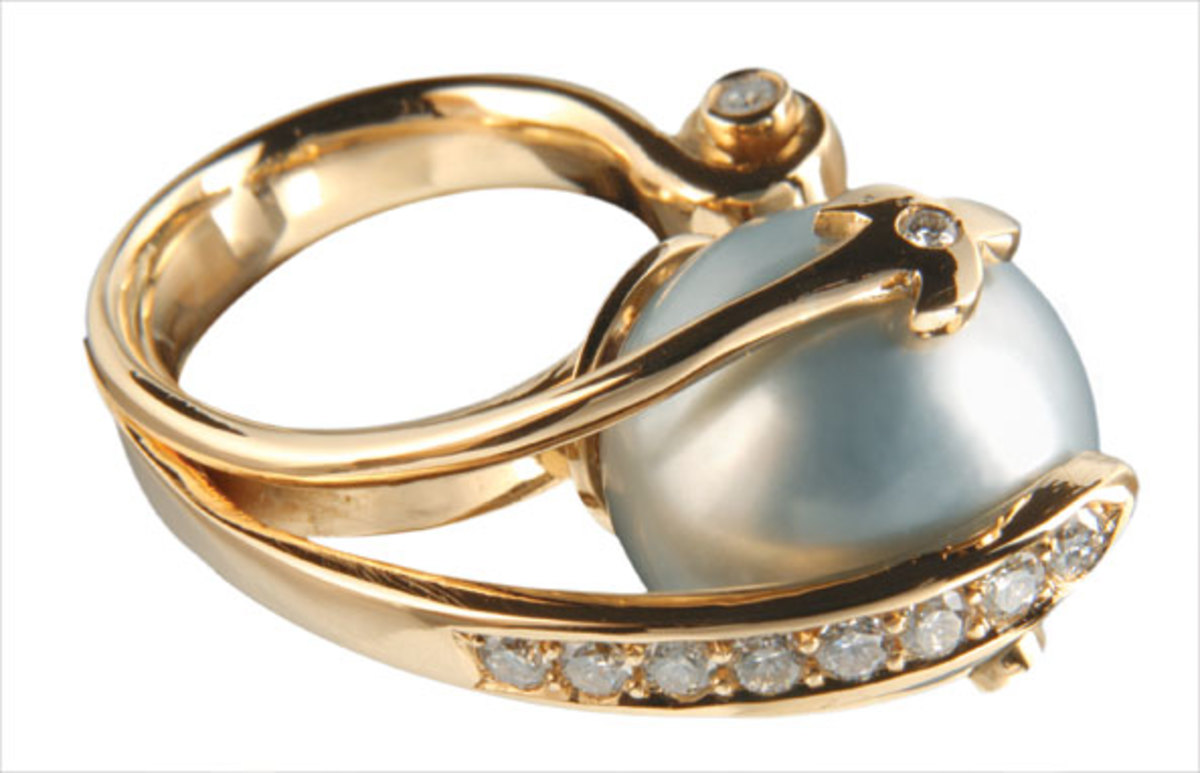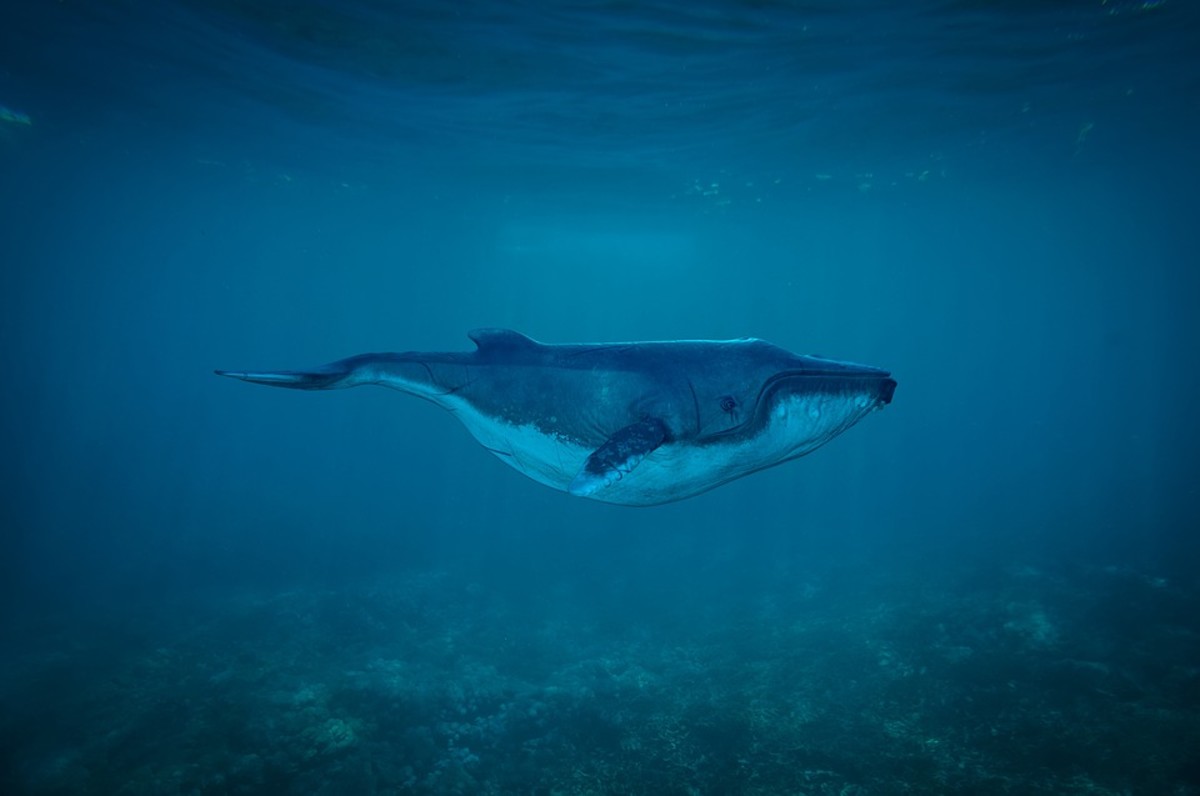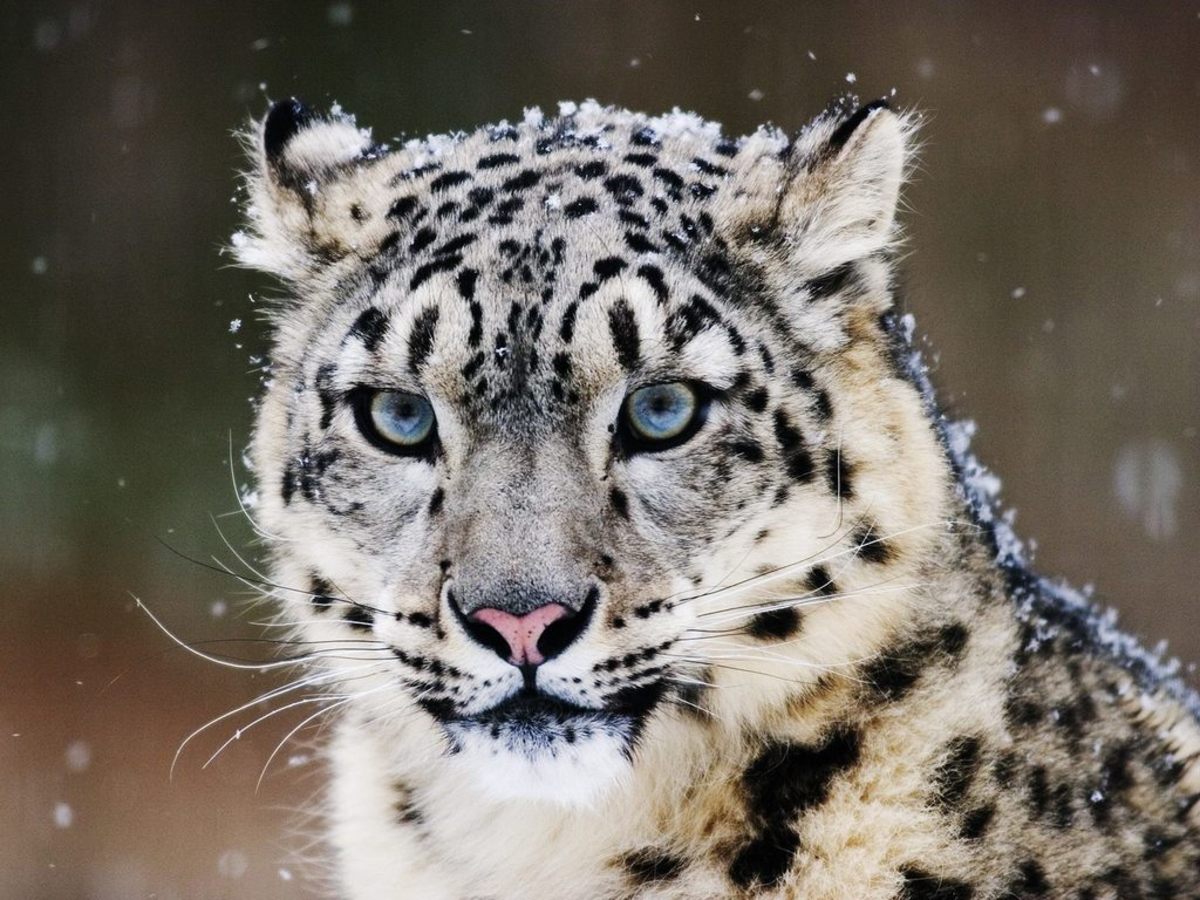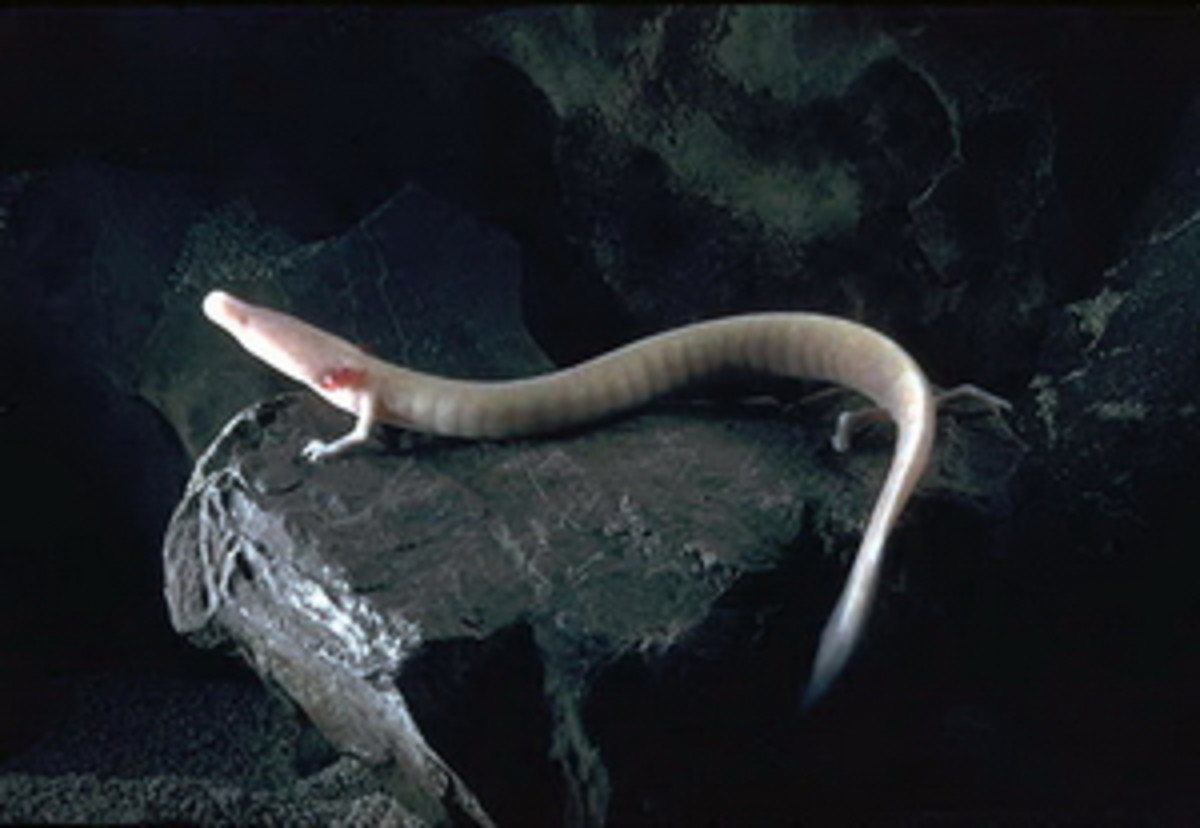- HubPages»
- Education and Science»
- Life Sciences»
- Endangered Species
Interesting Facts About Elephants
I didn't wake up that morning thinking I was going to take a ride on the back of a giant, it just turned out that way. It was a two day ride, an adventure of a life-time, that allows me to say:
"I've felt the spiny back and felt the hairy knee of the elephant who looked me in the eye and said she liked me."
The fact that the humongous fat elephant's back was spiny and uncomfortable, combined with the shock that it's knees are hairy, were both revelations that quickly led me on a journey of discovery once the elephant trek was over. Learning about the order of hoofed mammals -- the Proboscidea -- which include elephants and their ancestors, the mammoths and the mastodons, is a fascinating walk in the shadow of giants.
The elephant is wonderful in many respects. It's long, flexible trunk is extremely useful, for it serves as a kind of hand and arm, strong, yet capable of delicate "fingering," too. The trunk is really a prolonged upper lip and nose. The two nostrils run the whole length of it. They are surrounded by a marvelous construction of muscles.
The trunk is tough on its outer side, so tough that the animal can push heavy things over with it. However, at the same time it is delicate on its underside, and the animal is careful not to deliver too hard a blow, when using the trunk as a striking weapon.
It is not used for eating, of course, though you sometimes still hear the myth that a baby elephant takes its milk through the trunk. That's not true. An elephant does draw water up its trunk and then squirts the water into its mouth. Grains and similar food it may take in the same way.
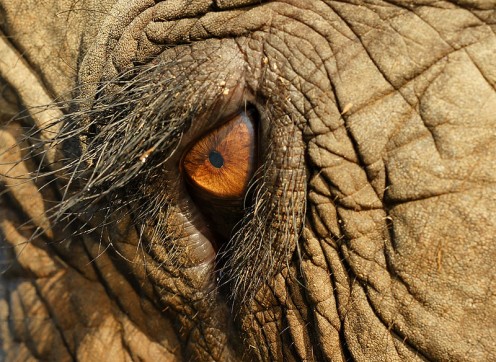
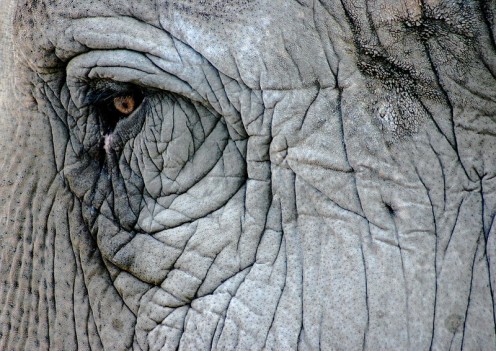
Pachyderms
The elephant's eyes are small compared to the whole of the mammal. It is true that it's vision is poor, but as often with nature, it's other senses are acutely wonderful when it comes to hearing and smell.
Additionally the elephant is the biggest land animal today. The elephant's great size is possible because the heavy body is well supported on massive, strong, straight legs, ending in broad feet with pads on the soles that cushion the beast from the shock of its own weight.
The number of toes on elephants varies with the type of elephant. The skin of the elephant is thick and tough and lies in loose folds in places.
Most of us are familiar with the term "pachyderm" That word is from the Greek words for thick and skin.
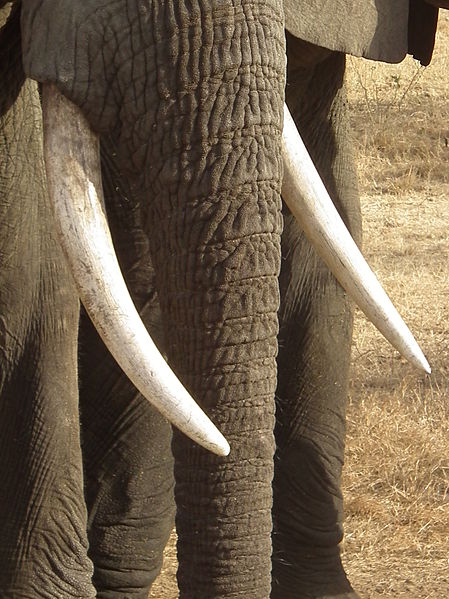
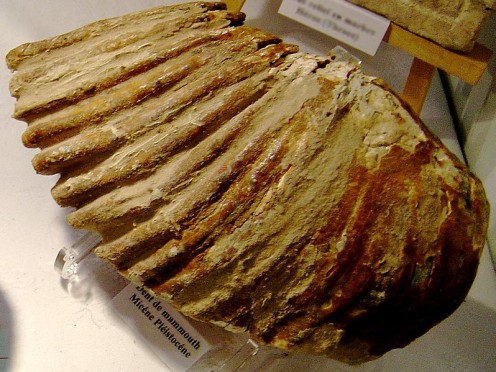
A Toothy Matter
The elephant's teeth are very strange. There are no front teeth, or incisors, at all. However, two front teeth, the second upper incisors, grow out in the form of tusks, on some species of elephants.
The tusk material is hard dentine, and once was valued by man since early days. My generation was quite familiar with ivory or ivory plated decorations and objects, but today it has been replaced for good reason by plastics.
Still, most of us today have at least heard of ivory, which is now illegal to sell or buy, except antique ivory objects -- to stop endangering this wonderful mammals by taking their tusks and costing them their lives.
The elephants grinding teeth or molars, come in, one after another as though they were on the rim of a wheel. Each too, as it wears away, travels forward in the jaw, and finally drops out and the one next behind moves upward and forward to take its place.
If the animal lives out its normal life, six such teeth follow such a course on each side of the upper and lower jaws. These teeth are flat on top, with fifteen or twenty small ridges of hard enamel crossing them.
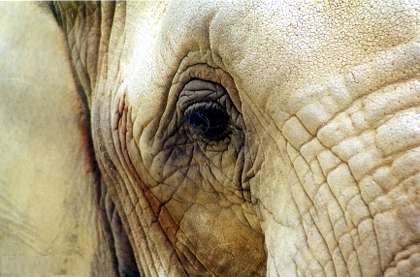
Elephant Park and Dine
Elephants spend much of their lives in eating. They eat grass, but seem to prefer leaves and twigs, and often break down good-sized trees in the wild in order to reach the foliage.
They rest generally through the heat of the day. Their usual gait is a walk, and they can travel many miles in a night, which is when they prefer to be on the move.
When in a hurry, they shuffle along at a good clip, however they never gallop. They are able to go up and down steep banks which a horse would be unable to climb, but they cannot jump, so a ditch too wide for them to step across will confine them.
Elephants love water and bathe and splash with every sign of true enjoyment.
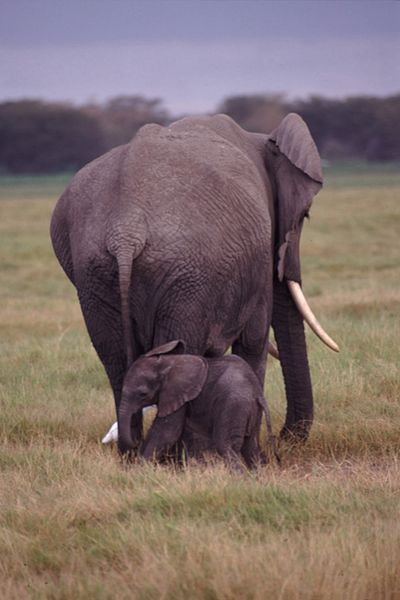
Mommy Love
A mother elephant has one young at a birth. The babies are often covered with coarse black hair. Their little trunks, which are only about a foot long, hang limply down, for the baby does not have the muscular control of its trunk until it is older.
The mother takes good care of her baby, nursing it on milk for its first two years, and tenderly watching over the young one for another two years.
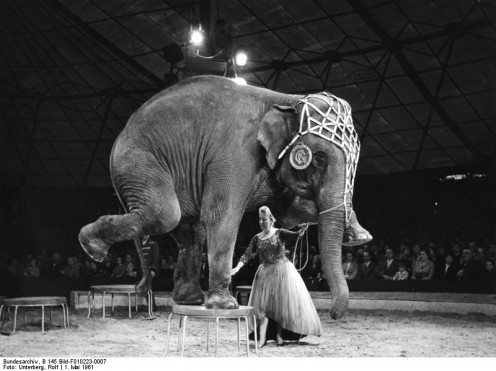
Elephant Myths
There are many myths about these wonderful mammals. Some of them were deliberate fabrications of truths, often in the advertising of circuses of old. They use to exaggerate the age of their elephants, for example, but other myths surround elephants.
One myth often told in the past is about "elephant graveyards." The story was that anyone find this spot can become rich from the great quantity of ivory found there. That myth was told both in Africa and Asia. There is no truth in it.
Like all animals, the elephant, if not feeling well, and unable to keep up with the herd, finds a secluded pot in which to die. This spot was often thick cover where vines and other vegetation will soon grow over the bones left by the animals, birds, and insects after they have eaten the deceased elephants meat.
Another myth surrounding the fact that "elephants never forget" is actually true. It's rooted in the size of the elephant's brain -- just like with humans, generally the bigger the brain, the better the cognitive powers and memory.
Elephants are said to be have to mentally map their environment, which in terms of size could be compared to certain small states, such as Rhode Island. Also, elephants who were once together, then separated for sometimes decades, will recognize each other upon reintroduction, often with great joy and glee.
Technically speaking, there is no such thing as a "pygmy elephant." Over the years, the few animals that have been shown off as pygmy elephants, just turned out to be young bush elephants.
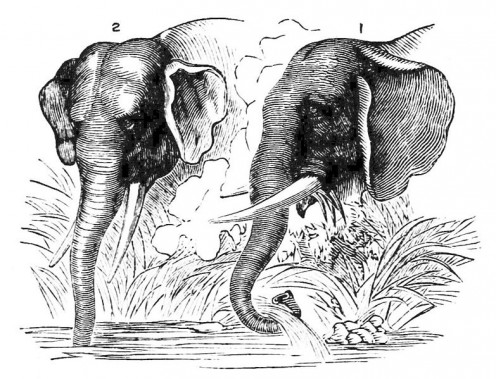
Differences In Elephants
Of the elephants of today, the Indian or Asiatic elephant is the one best known. He is the one most frequently seen in circuses and zoos. In the wild, these elephants generally had herds of about twenty to thirty or even larger -- all related, with families staying together. They preferred thick cover, and fed upon grass, leaves and fruits, and were especially fond of tender shoots of bamboo. They are very fond of water and are excellent swimmers.
African elephants differ in appearance from the Asiatic elephants in a number of ways. The great ears of the African elephant are about three times the size of those of the Asiatic. Generally, the Asiatic elephant has five toes on the forefoot and four on the hind, while the African has but three toes on the hind foot.
There is a finger-like process on both the front and hind edges on the tip of the trunk of the African elephant, while the Asiatic has this process only on the front edge.
Did You Know?
Elephants are the only animals that can't jump.
If You'd Like To Know More About Elephants!
- African elephants
- Asian Elephants - National Zoo| FONZ
Asian elephants are endangered in the wild, where perhaps only about 30,000 still live in forests of south and southeast Asia. Learn about Asian elephants in the wild and at the National Zoo. Brought to you by the National Zoo| FONZ. - Elephant care manual for mahouts and camp managers
This manual represents the latest collaboration in a long and fruitful relationship between the Forest Industry Organization of Thailand and the FAO Regional Office for Asia and the Pacific to improve the conservation, management and welfare of the A - Differences between African and Asian elephants
information about wild and captive elephants in zoo and circus. Written by a elephant keeper. - Elephant Facts - Defenders of Wildlife
Get the facts on elephant. Elephants are the largest land-dwelling mammals on earth. Take action and help save endangered elephants. - Worst year in decades for endangered elephants – USATODAY.com
Large seizures of elephant tusks make this year the worst on record for the endangered species since ivory sales were banned in 1989.


